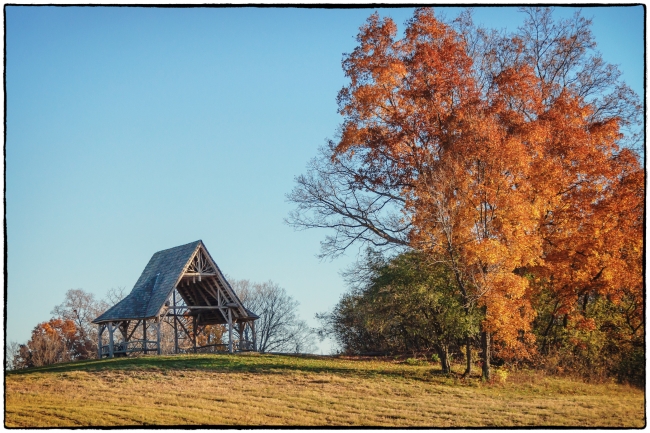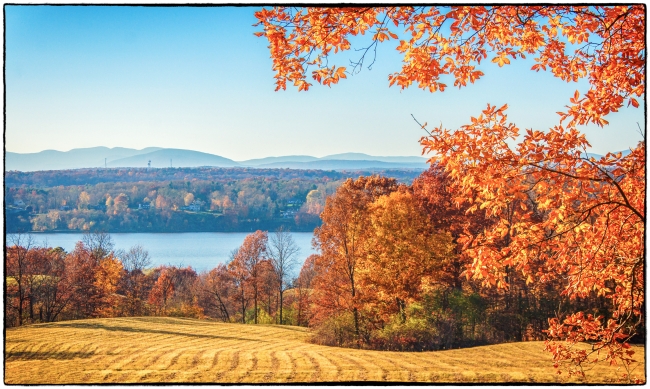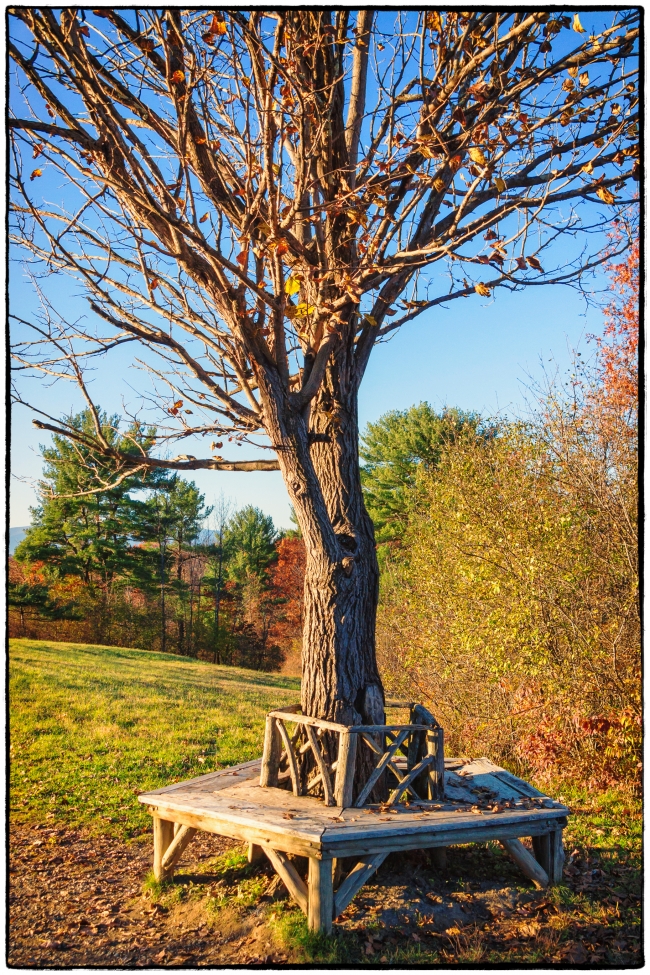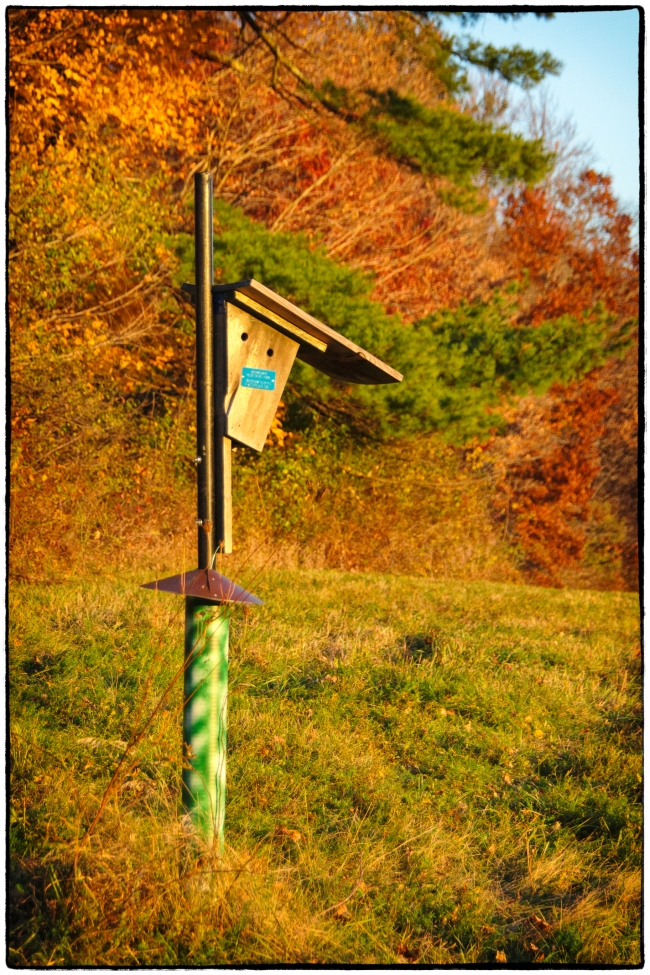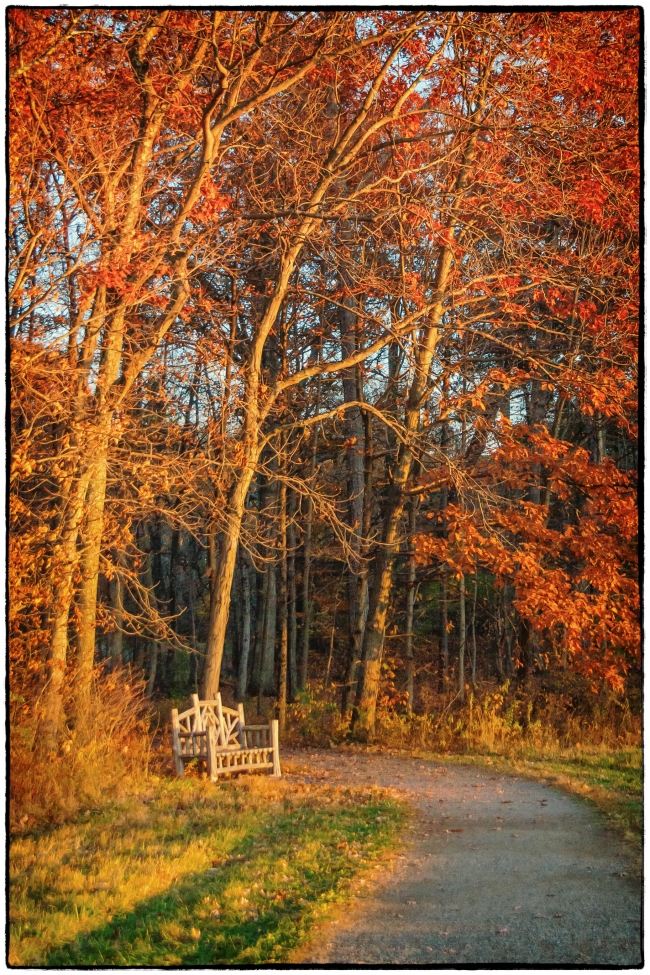Overlook and tree.
It was a gorgeous warm, sunny fall day with not a cloud in sight so we decided to venture north and take the dog for a walk at Poets’ Walk Park near Red Hook in Dutchess County, NY. I hadn’t been there before and found it most enjoyable – full of rolling meadows, interesting wooden structures and spectacular views out over the Hudson to the Catskill Mountains. There are only about two miles of trails divided into two parts. The first part takes you through meadows to The Overlook, a large rustic wooden structure. The second part is a bit more rugged, descending down through woods to the river and then ascending back again to near The Overlook. All told we walked for about two hours, a bit more than my wife (who isn’t much for walking in the woods) would have liked. We went towards the end of the day and the light was great.
View from the Overlook – Hudson River and the Catskill Mountains.
An information board near the entrance describes the park as follows:
The forests around Poets’ Walk were first cleared almost 300 years ago for farms. But the landscape we see today began to take shape in 1849, when owners Franklin H. Delano and Laura Astor replaced the old farms with a landscape garden. Designer Hans Jacob Ehlers laid out a series of grassy clearings linked by winding paths culminating in a dramatic view of the river and distant Catskill Mountains.
They named the estate Steen Valetje – Little Stony Falls – in honor of the region’s Dutch heritage. But this was no traditional garden. Old-fashioned gardens had straight pathways lined with neatly trimmed hedges and flower beds. Steen Valetje’s meadows were designed to enhance the nataural contours of the land – to look as if they had not been designed.
Once coveted for its rich agricultural land, by the mid-19th century the Hudson Valley attracted poets and painters for its beauty. Two famous writers particularly loved walking here. In honor of Washington Irving and Fitz-Greene Halleck, in 1996 Scenic Hudson renamed the estate Poets’ Walk Park.
Tree and Bench
It’s an idyllic spot, but apparently there it has a dark history. According to the information board.
Behind the sunny meadows of Poet’s Walk lies a story of intrigue and betrayal. It begins in 1710, when a band of German refugees arrived in the Hudson Valley, lured by promises of jobs and land for farms. The scheme fell through. Some historians dispute the accuracy of this story.
As the refugees starved, wealthy landowner Robert Livingston refused to give them the land he had promised. Taking advantage of their distress, his brother-in-law, Colonel Henry Beekman, offered to rent them some of his land. This was a poor substitute for owning their own farms, but the refugees had few options. Some accepted his offer. They cleared the forest and created the first agricultural landscape of Poets’ Walk. Finally in 1839, farmers throughout the region went into open revolt. They marched, demonstrated and petitioned the politicians. Within a few years the Anti-Rent War had ended the worst abuses and curbed the landlords’ power
Bird House Face.
On the way back.

